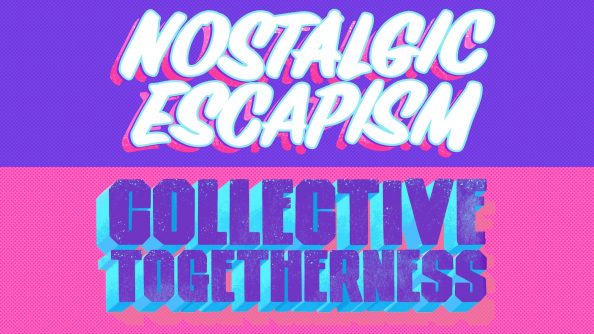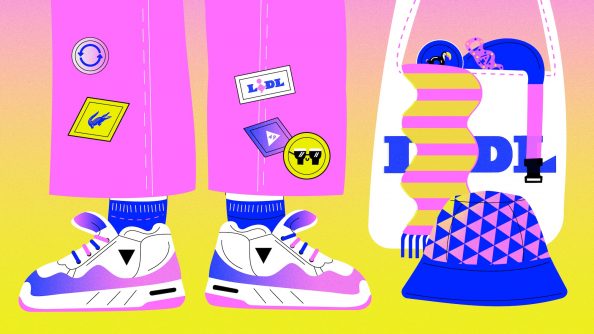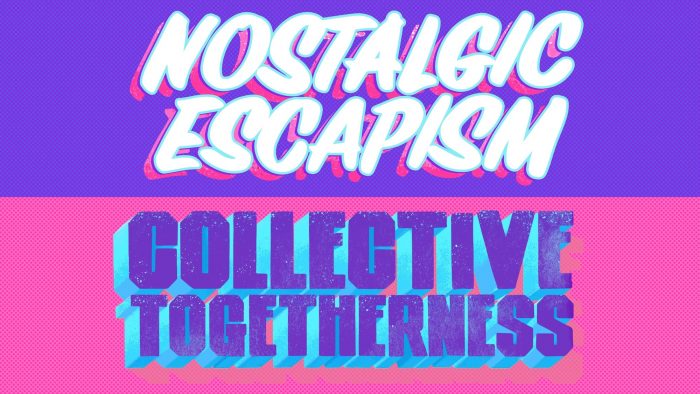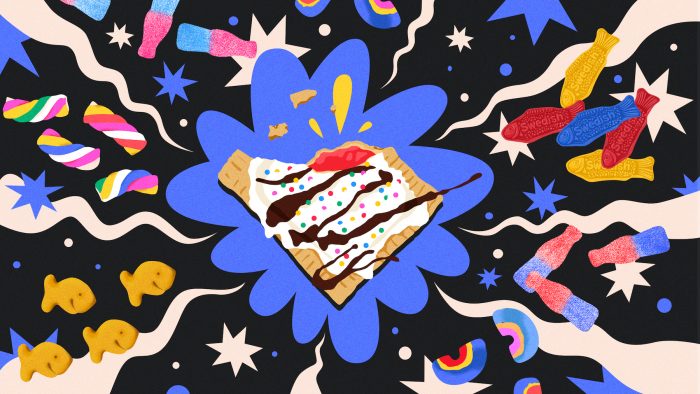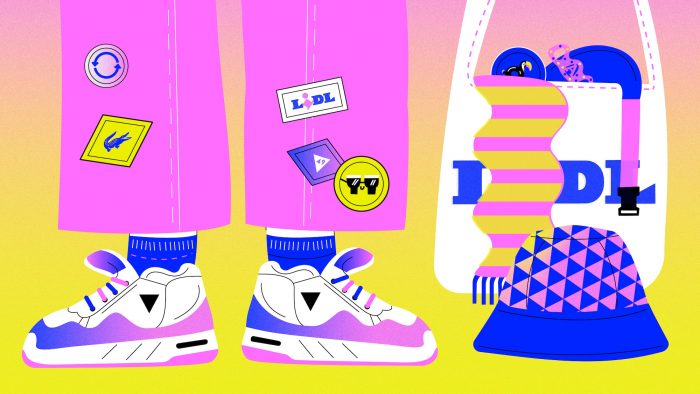It’s no secret that for brands to stay relevant in culture and ahead of the curve, they need to know how to identify industry trends, as well as trends in the world at large.
But in this constantly tapped-in world, where every brand leader references the same small pool of trend reports from a handful of sources, how can you read between the lines to transform a generic trend into an actionable and unique insight?
At Vault49, we too get the same trend reports as everyone else. But we employ an approach we call Trend Jamming to interpret those trends, and how they impact our clients, through a totally unique lens.
Trend Jamming is all about going deeper in interpreting trends, exploring how they intersect, converge and conflict with each other, and always asking the “why?” behind them. There are countless ways to Jam, but we’ve outlined a few of our favorites below.
Jam Across Categories:
The world doesn’t operate within category constraints, so neither should you.
You might be aware of consumer trends across categories, or you might skim past the sections of trend reports that don’t directly impact the world your brand lives in. But consumer and cultural trends – even those hyper category-specific ones – aren’t held to the marketing category constraints. In reality, trends move, shift, and impact each other, without regard to which category they are impacting.
It’s essential to keep ahead of trends that impact your brand today and tomorrow. This means considering insights within categories that stretch and challenge your assumptions, not just those directly related to your brands’ immediate world.
Let’s explore this through two COMPLETELY distinct categories – Cars & Cannabis. If you are in the auto industry, you’ll likely assume even referencing cannabis is a no-no. And while you have to tread carefully (for obvious reasons), when you read deeper into what’s really behind Cannabis trends, you can unlock insights that are relevant for any industry. Even cars.
For example, CBD is the “it” ingredient in everything from beauty to supplements – not for its intoxicating effect, but for its proactive mental health effects like stress reduction. This cues the larger trend towards consumers striving to proactively manage their mental health, rather than simply react to it.
While I’m not recommending CBD-infused steering wheels for the auto industry, there is still much to take away. For instance, given the demands of a daily commute, what in-car features can proactively manage mental health? Perhaps we should introduce heart-rate monitors that provide breathwork guidance during moments of stress, or mood lighting that adjusts for different traffic conditions.
When you look between the lines across category trends, you can elevate the core motivation behind any specific trend, making it fresh and relevant for your category, no matter how far out it may seem.
Jam Across Time:
Unpack the past to forecast the future.
This type of jamming is especially relevant given the current unknown state of the world post-COVID. Are once universal macro trends (such as the “experience economy,” where consumers value social and sharable experiences over things) still prescient, or are they no longer relevant?
As you jam across time, don’t push suddenly irrelevant trends to the side, but instead explore them in depth to uncover what might follow. It’s as true for macro trends like the experience economy (after a global pandemic unexpectedly threw a wrench into that one), as well as for other common trends that come and go in a natural cycle.
Let’s focus on the more common instance when you might jam across time: faddish ‘flash-in-the-pan’ trends. By the time a brand can react to “the next hot [flavor, color, style, etc.],” popular culture has already moved on.
Take an ingredient that swept 2019 – matcha. Its mellow energy boost, complex flavor, rich back story and vibrant green hue transformed a tea powder into the coolest ingredient in everything from skincare to donuts.
Not to say that matcha will go away (at least I hope it won’t because I’ve fully bought into the hype), but how can we use these insights to predict the next ‘it’ ingredient? One cue might be around vibrant color and the over-arching consumer trend towards multisensorial experiences. Using this more targeted approach, we can explore ingredients that lead with striking visual impact as well as great flavor.
We’re already seeing a new colorful ingredient take over – a purple sweet potato from the Philippines called Ube – adding it’s shocking lilac hue to Michelin menus and Trader Joes ice cream alike.
We might still be in the dark about what consumers will value once quarantine is over, but when we jam across time, we’re able to identify more targeted predictions. These may or may not come true, but they can provide you with a head-start advantage.
Jam Across Consumers:
What connects people is more powerful than what makes them different.
As marketers, we are taught to reach the right audience with the right message by segmenting targets based on their differences. Reaching Boomers is different than reaching Gen Z. Speaking to culinary tastemakers is different than speaking to fast food lovers.
While this is a valid approach, when you look at what these groups SHARE vs. what drives them apart (and the trends impacting that) you can position your brand to reach more people with a sharper message. This goes against another marketing truth that when a brand tries to reach everyone, they reach no one.
Thinking about consumer tribes vs. segments allows brands to own trends by speaking with a point of view that more deeply connects with a certain mindset of people across demographics.
For example, when it comes to skincare, the products and benefits that 50+ year olds look for are most likely quite different than what teenagers look for. The older demographic might want wrinkle treatment, the younger might want a cure for acne.
But, what both of these disparate demographic groups share are their core values and behaviors in rebelling against the once established beauty norms Whether it’s rebelling against the idea that wrinkles are a problem that needs to be fixed, or rebelling against the idea of a single picture of beauty that ignores individual expression.
What does this mean for a brand in the skincare space? While functional benefits might skew towards one segment or another, the beliefs and values that we share can unite many. An acne-focused skincare brand targeting teens could expand their audience by moving from messaging around functional benefits (i.e. zit fighting) to one of loving the skin you are in. Likewise, a traditional anti-aging brand could gain traction and usage with a younger audience by having an open conversation about anti-labels in general.
Jamming across what people share lets brands have deeper connections, more meaning, and more enduring relationships with their consumers. More importantly, it encourages us to think about the human beings our brands reach, not just the “consumers” who buy our products.
Jam Across Design:
Speak with a flexible language that meets the test of time.
Brands create their visual identities and design language to last. The purpose of a logo and design system is to provide a consistently recognizable icon that drives consumer awareness and connects to the core values and offerings from the brand.
While that is true, some design trends come and go while others remain ever-present. Even the ones that go may see a resurgence a few years later as other trends in our lives continue to shift.
So jamming across design trends lets brands anchor themselves in the ever-present themes of design (what ALWAYS looks good), while giving them room to flex for the inevitable hot color.
Let’s explore what this could look like for a new digital banking brand seeking to define their core visual assets and design language. At the core of what makes them different is their ability to make the complex world of finance easy to understand and put into practice (even for the least savvy budgeters). By anchoring their core visual identity in an enduring design truth (such as minimalism), it is possible to communicate this point of difference clearly and in a relevant way for years to come.
Secondary brand truths – a playful personality for example – might not come through that minimal core. Such characteristics might be best communicated through evolving design trends. This year might be a quirky illustration style on OOH ads. Next year might have a typographic focus. And the following year might make the most of a bold and disruptive color palette.
When brands jam across design trends, it gives them the power of speaking their core brand truth through an enduring design, while giving permission and flexibility to dial up and down other design levers that communicate secondary messages in an of-the-moment look and feel.
Jam Across Cultures:
Global appeal comes from local understanding.
There’s no doubt our world is smaller than ever, and our cultures more connected than ever. But there’s not just ONE global culture (luckily!). Local trends and truths endure, and thanks to the connections between them, every “local” seeks out inspiration and trends from other “locals” to make it their own.
Directly lifting truths of any local culture into another risks appropriation. But when brands show their understanding of local, and use that to inspire how they show up with consumers, that’s when they are seen as truly global.
True global brands don’t speak the same language, have the same business model, or offer the same varieties in every market. Nor do they show up as hyper-localized on every level. It’s somewhere in between – where they translate a globally relevant product offering or brand positioning with local nuances. Existing on a global level, but delivering on a local one.
Take, for example, a global food delivery brand platform. Around the world, their brand name is synonymous with connecting you to the most innovative restaurants, chefs and flavors within your delivery range.
But in every region, every country, every city, what that means from an emotional and functional level is different. In NYC, where everything is already at our fingertips, it might mean exclusive partnerships with up-and-coming chefs, yet to start their own restaurant. While in Bogota, it could mean offering a greater range of cuisines than any other delivery app.
Functionally, the operational challenges faced in delivering food that lives up to this promise is also different locally. In Oslo, it’s about keeping soups hot, while in Mumbai its about keeping ice cream frozen. In LA, it’s about driving hype about the newest partnerships, while in Paris it’s about making them.
When brands jam across cultures, they are able to better deliver on local nuances, while maintaining a global appeal and consistent point of difference in any market.
In summary…
Trends are at their best, most powerful and most relevant when brands look at them in their full context, not in a silo of category, time, segments, designs or cultures.
These different approaches to jamming are a good first step, but there are endless ways of exploring and mixing trends, understanding how they converge and diverge, and applying them to your brand and business in the right way.
Play around with your own style of jamming. And always ask the ‘why’ behind any given trend to help spark your own jamming journey.
